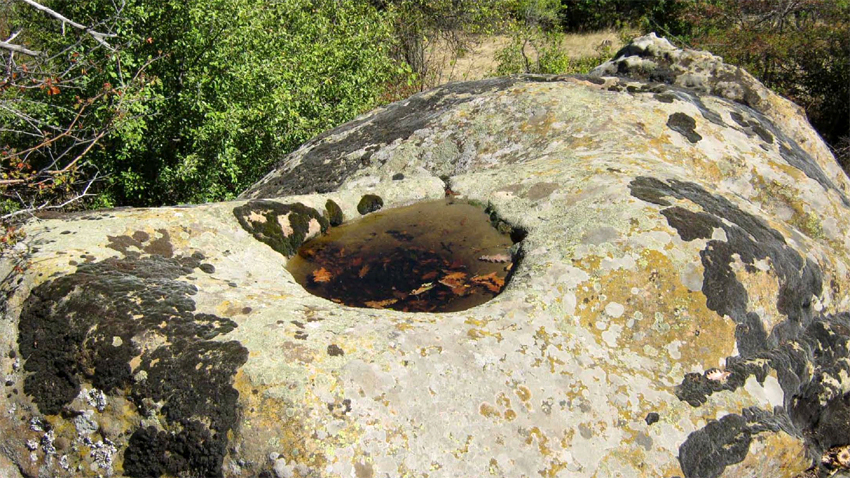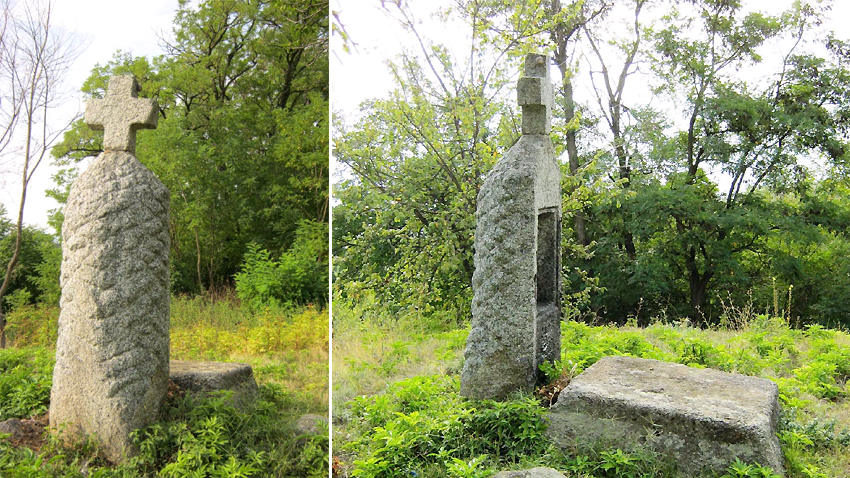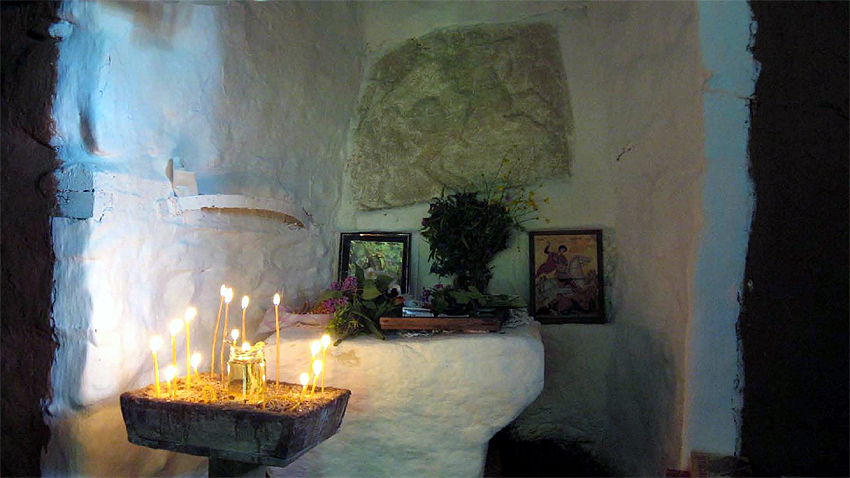Christianity denies paganism. However, there are many interesting connections between pagan and Christian objects, which have not been systematically explored and analyzed, Associate Professor from the Institute of Solid Body Physics Lubomir Tsonev contends and adds:
“Rural legends have it that people saw given relics in their dreams, buried in a certain area nearby their village. When they went to those places, they really found something there and later built a chapel on that place. Those cases are too many to be accidental. In my view, this continuity is linked with the memory of the local population about holy places of the past.”
One of the examples proving that phenomenon is Krustati Kamen situated not far from the city of Kyustendil (Southwest Bulgaria), close to the Bulgarian-Macedonian border. It is a two meter high cross carved from a massive rock. The cross broke into the rock behind it. Lubomir Tsonev visited that place:

“I spotted round-shaped, exquisite and finely carved pits with small groove on top of the cross when I was going round it. According to archaeologists, those are prehistoric sanctuaries. No one knows for sure what ancient people used to pour into those pits - whether it was water, milk or wine, because those relics date back to the 2nd Millennium BC.”
Another remarkable site is the Saint Peter and Paul consecrated ground in the village of Cherven Briag near the town of Dupnitsa.

“There is a pre-historic mound on that place. A vertical two-meter high stone was fixed on its peak. Its upper end was carved during Christianity and shaped as a cross. A small niche, where people used to light candles, was chiseled out on one side. It turned out that similar sites were found in Western Europe as well. The crosses carved onto rocks symbolize the new era. Chapels were usually built over mounds, which were covered with dolmens. However, people take good care of those sites in Western Europe, unlike here in Bulgaria, where I had difficulties to find such sites at all”, Associate Professor Tsonev said. He also pointed out that evidence about such objects have been slowly dying together with the elderly people.
 The Thracian Horseman - a deity also called Heros is another evidence of the link between Christianity and Paganism. More from Associate Professor Lubomir Tsonev:
The Thracian Horseman - a deity also called Heros is another evidence of the link between Christianity and Paganism. More from Associate Professor Lubomir Tsonev:
“The image of the Thracian Horseman was created by local Balkan tribes before Christ. Nearly 5,000 embossed stone plates with that image have been found. Apparently, the local population used to imagine its God as a horseman. The Thracian Horseman does not show any aggression. It either rides its horse, or goes hunting. Such embossed plates were made until the end of the 6th century. In the 9th and the 10th century people started to honor Saint George who, according to legends was a warrior. The first images of Saint George show him holding a sword and a shield. He was depicted in an upright and seated position. However, an image of Saint George riding a horse appeared in the Balkans around the 9th century. I suppose that local population depicted its heroes and Gods on horses to show respect to them. Between the 15th and the 19th Centuries people in many Bulgarian regions regarded stone plates with the image of the Thracian Horseman as icons of Saint George.”

One such case was registered near the city of Plovdiv (Central South Bulgaria). A museum was founded there in the beginning of the 20th century. Its director Boris Djankovic visited the houses in that area in search of artifacts for the museum. He saw a small chapel in a small private house. There was a stone plate with the image of a Thracian Horseman. The plate was used to honor Saint George for a very long time and people lit candles on it. As a result, a thick layer of soot formed on top of that plate.
 Another interesting evidence of the link between the old images of the Thracian Horseman and the one of Saint George was a double icon found in the coastal town of Sozopol in the beginning of the 20th Century, Associate Professor Tsonev said and added:
Another interesting evidence of the link between the old images of the Thracian Horseman and the one of Saint George was a double icon found in the coastal town of Sozopol in the beginning of the 20th Century, Associate Professor Tsonev said and added:
“It is an embossed wooden plate with the image of two horsemen - Saint George and Saint Demetrius placed in a frame. The frame dates back to the 17th century. However, the wooden plate is even older. Saint George is holding a spear and battles a beast. A bow and a bunch of arrows can be seen behind his back. This can't be seen on other icons of Saint George. This is typical of the Thracian Horseman who was a hunter. There is also a tree against the two saints. A snake coils around the tree. Saint Demetrius is waving a mace towards the snake. The plot with the Thracian Horseman, the tree and the snake was depicted on over half of the plates dating back to the Thracian period. The icon painter had copied the old patterns on purpose. The wooden plate itself is also embossed, just like the stone plates. However, such a plot does not exist in Christianity”, Associate Professor Tsonev concluded.
English version: Kostadin Atanasov
152 years after Bulgaria lost its beloved son and advocate for a free, independent and tolerant state – Vasil Levski, his personality continues to excite and inspire Bulgarians from all generations. Scholars continue to study the work of the Apostle..
Vasil Levski is a Bulgarian revolutionary and national hero who fought for the Liberation of Bulgaria from the Ottoman Empire. He is an ideologist, founder and organizer of the Internal Revolutionary Organization, for which grateful..
Bulgarian Patriarch Daniil will celebrate the first liturgy in London for the consecration of the new church of the Bulgarian Orthodox community in the British capital - the church of Saint Ivan Rilski. T he church is part of the Bulgarian Embassy..
Meatfare Sunday in 2025 will be remembered as a major celebration for the Bulgarian Orthodox Church and the entire Bulgarian community in the United..
After nearly 35 years, the Bulgarian Orthodox Church Community in London has its own church in the central part of the British capital, in close proximity..

+359 2 9336 661
